What exactly is supplemental oxygen? It is oxygen provided in addition to the natural air we breathe, designed to improve oxygen availability to the body in various medical and recreational settings.
From years of experience in the field of oxygen systems, my journey has equipped me with valuable insights that I’m eager to share with you.
In this guide, we will dive into the various aspects of supplemental oxygen, including its definition, uses, and benefits across different industries. Providing you with a comprehensive overview that enlightens and informs.
Read on for a supplemental analysis!
1. The Basics of Supplemental Oxygen
Supplemental oxygen refers to oxygen that is provided in addition to what we naturally breathe in from the air. It’s used to guarantee that enough oxygen reaches the body’s tissues, especially when the lungs are not absorbing enough oxygen on their own. This can be due to various health issues or environmental conditions where oxygen levels are low.
The use of supplemental oxygen has become a critical component in healthcare, aiding patients with respiratory issues and individuals involved in high-altitude activities like mountaineering. Amazing, isn’t it? By boosting the amount of oxygen available to the body, it helps in maintaining optimal health and improving the body’s overall function.
2. Benefits of Using Supplemental Oxygen
Building on the foundation of the basics of supplemental oxygen, it’s clear that its application spans across various fields for significant reasons. Here are some key benefits that make supplemental oxygen a helpful resource:
Improved Recovery
For patients recovering from surgery or dealing with chronic lung diseases, supplemental oxygen can accelerate the healing process. By ensuring tissues get enough oxygen, the body can repair itself more effectively and quickly, reducing recovery times significantly.
| Benefit |
Description |
| Accelerated Healing |
Supplemental oxygen aids in delivering oxygen to tissues, promoting faster healing post-surgery or during illness. |
| Reduced Recovery Time |
By ensuring adequate oxygenation, recovery times for patients with chronic lung diseases are significantly shortened. |
| Improved Respiratory Function |
Oxygen therapy supports lung function, assisting patients in breathing more easily and effectively during recovery. |
| Enhanced Tissue Repair |
Increased oxygen levels in the body facilitate cellular repair processes, leading to improved tissue regeneration. |
| Decreased Risk of Complications |
Proper oxygenation reduces the likelihood of post-operative complications, contributing to smoother recovery outcomes. |
Better Sleep
Individuals with sleep apnea or other breathing disorders can benefit greatly from nighttime use of supplemental oxygen. It helps maintain stable oxygen levels throughout the night, leading to more restful sleep and better overall health. Imagine waking up feeling refreshed every morning.
Altitude Sickness Prevention
Travelers and adventurers heading to high-altitude destinations can use supplemental oxygen to prevent altitude sickness. By compensating for the lower oxygen levels found at high elevations, it helps the body adjust more smoothly, making activities like hiking and skiing more enjoyable. Turn your high-altitude adventure into a breathtakingly positive experience.
3. Types of Supplemental Oxygen Systems
Following the exploration of the benefits of supplemental oxygen, it’s important to understand the different systems available to deliver these advantages. Here are the main types employed across various settings:
Compressed Gas
Compressed gas systems store oxygen in high-pressure tanks. These tanks are portable, making them a good choice for users who need to move around. However, they require regular refilling, which can be a consideration for long-term use. They’re widely used in both home and medical settings for their reliability.
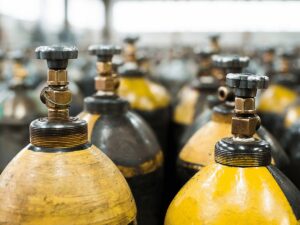
Liquid Oxygen
Liquid oxygen systems keep oxygen in a liquid state at very low temperatures. When needed, the liquid converts back to gas, providing a steady oxygen supply. These units are more compact and hold more oxygen than compressed gas tanks, making them suitable for individuals with higher oxygen needs. Experience the convenience and efficiency of liquid oxygen in your daily life.

Oxygen Concentrators
Oxygen concentrators pull in ambient air, remove nitrogen, and deliver purified oxygen. As per Cleveland Clinic, it allows up to 95% of breathing pure oxygen depending on the patient’s condition. They don’t require refilling and can provide a continuous oxygen supply as long as they’re powered. This makes them ideal for home use, though portable models are also available for users on the go.
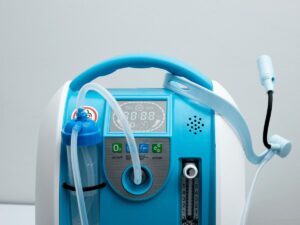
Hyperbaric Oxygen
Hyperbaric oxygen therapy involves breathing pure oxygen in a pressurized room or chamber. This method significantly increases oxygen absorption in the body, used mainly for medical treatments, including wound healing and treating decompression sickness in divers. Oxygen-ark specializes in providing advanced hyperbaric chambers, supporting a wide range of therapeutic applications.
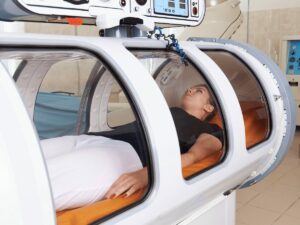
4. Different Forms of Supplemental Oxygen Delivery
Choosing the right type of supplemental oxygen system is just one part of the equation; how the oxygen is delivered to the user also plays a crucial role. Below are the most common delivery methods:
Nasal Cannula
A nasal cannula is a lightweight, flexible tube with two prongs that fit just inside the nostrils. It’s the most common delivery method for long-term oxygen therapy, allowing for mobility and ease of use. The cannula is suitable for delivering low to medium oxygen flows, making it ideal for home use and mild to moderate oxygen needs.
Face Mask
Oxygen masks cover the nose and mouth, providing a higher level of oxygen concentration compared to nasal cannulas. Masks are often used in hospitals for short-term oxygen therapy or in situations requiring higher oxygen levels. Now, this is important, they’re effective but can be less comfortable for long-term use due to their covering of the face.
Venturi Mask
The venturi mask is a specific type of face mask designed to deliver a precise oxygen concentration. It mixes oxygen with room air, creating high airflow with controlled oxygen levels. This mask is particularly useful for patients needing specific oxygen concentrations without the risks of getting too much oxygen.
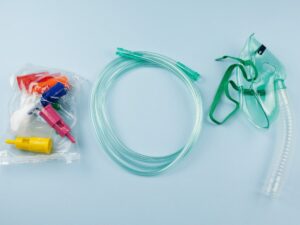
5. Safety Measures While Using Oxygen
Understanding the different forms of oxygen delivery is crucial, but ensuring safety while using supplemental oxygen is paramount. Here are the safety tips to follow, regardless of the oxygen delivery system used:
No Smoking
Oxygen supports combustion, making smoking around oxygen equipment extremely dangerous. Make sure that both the user and anyone nearby refrains from smoking to prevent fires. For example, placing clear “No Smoking” signs in areas where oxygen is used to remind everyone of the risks.
Avoid Flames
In addition to avoiding smoking, keep away from open flames, including candles, fireplaces, and gas stoves, when using oxygen. Even small sparks can ignite in an oxygen-enriched environment, leading to serious accidents. So what’s my point? Always maintain a safe distance from any potential source of ignition.
Check Equipment Regularly
Regularly inspect your oxygen delivery equipment for any signs of wear, damage, or malfunction. This includes checking the tubing for kinks or blockages, ensuring masks and cannulas fit well, and monitoring oxygen levels in tanks. Regular maintenance can prevent equipment failure for safe oxygen delivery. Oxygen-ark offers high-quality equipment and maintenance advice to ensure your systems operate flawlessly.
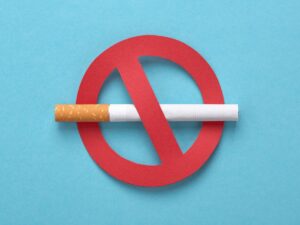
6. 4 Tips for Choosing the Right Oxygen System for Your Needs
After focusing on safety measures, the next step is to select the oxygen system that best meets your needs. Here are some key considerations to guide you through this decision:
#1 System Type
There are primarily three types of oxygen systems: concentrators, compressed oxygen tanks, and liquid oxygen systems. Concentrators are suitable for continuous use and require electricity. Tanks offer portability but need regular refilling. Liquid oxygen systems provide a compact and longer-lasting solution but at a higher cost. Choose based on your mobility needs, space constraints, and access to refilling or power sources.
#2 Noise Level
Noise Level is an important factor to consider when selecting an oxygen system, especially in environments requiring peace. Oxygen concentrators, for instance, can vary significantly in the noise they generate during operation. A quieter system certifies a more comfortable environment for patients and healthcare providers. When choosing your oxygen system, look for models with low decibel ratings.
#3 Scalability
Consider the future expansion of your services or potential increases in demand. A scalable oxygen system can adapt to growing needs without requiring a complete overhaul. Look for systems that allow for easy addition of modules or can be integrated with larger oxygen supplies as your requirements evolve.
#4 Maintenance Ease
Maintenance requirements can significantly impact the overall convenience and uptime of your oxygen system. Opt for systems known for reliability and ease of maintenance. Systems that offer straightforward troubleshooting and minimal downtime will certify continuous operation, crucial for medical and health applications.
Dive Deeper Into Our Resources
For some insightful reads, we’ve curated a list of recommended articles just for you:
Still haven’t found what you’re looking for? Don’t hesitate to contact us. We’re available around the clock to assist you.
Conclusion
Supplemental oxygen plays an important role in enhancing health and performance across various fields. This guide has equipped you with a foundational understanding of its benefits, systems, delivery methods, safety, and selection tips.
For businesses eager to explore supplemental oxygen solutions further, Oxygen-ark offers expert advice and products tailored to your needs. Contact us to discover how we can support your objectives.






